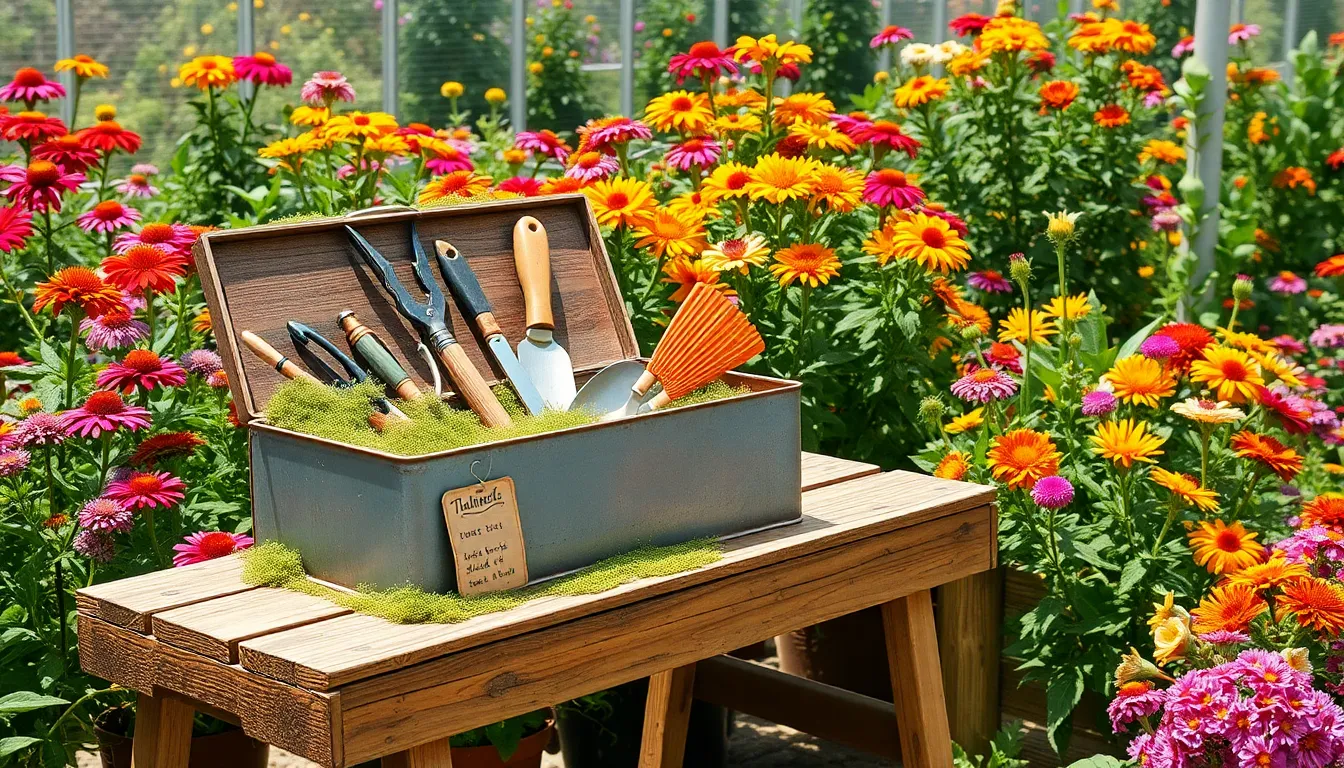Imagine stepping into your garden and being greeted by a flurry of vibrant butterflies, flitting joyfully from bloom to bloom. Creating a butterfly garden is not just about attracting these delicate creatures; it’s about crafting a sanctuary where nature can thrive right outside your door. For both novice and seasoned gardeners, understanding the essential tools needed for this endeavor can transform your outdoor space into a living, breathing canvas of color and life.
Whether you’re just starting out or have years of experience under your belt, knowing the right tools to use makes all the difference. In this article, we’ll explore everything from the specific types of trowels and spades that make planting a breeze, to the pruning shears that keep your garden trim and welcoming. We’ll also delve into the importance of choosing the right watering equipment to maintain a healthy environment for both plants and butterflies.
With the right tools, you can ensure that your butterfly garden is not only beautiful but also sustainable. Readers will learn how to select and use these tools effectively, turning the dream of a flutter-filled garden into a reality. So, let’s embark on this journey together, embracing the joy and satisfaction that comes from nurturing a haven for butterflies in your own backyard.
Choosing Butterfly-Friendly Plants
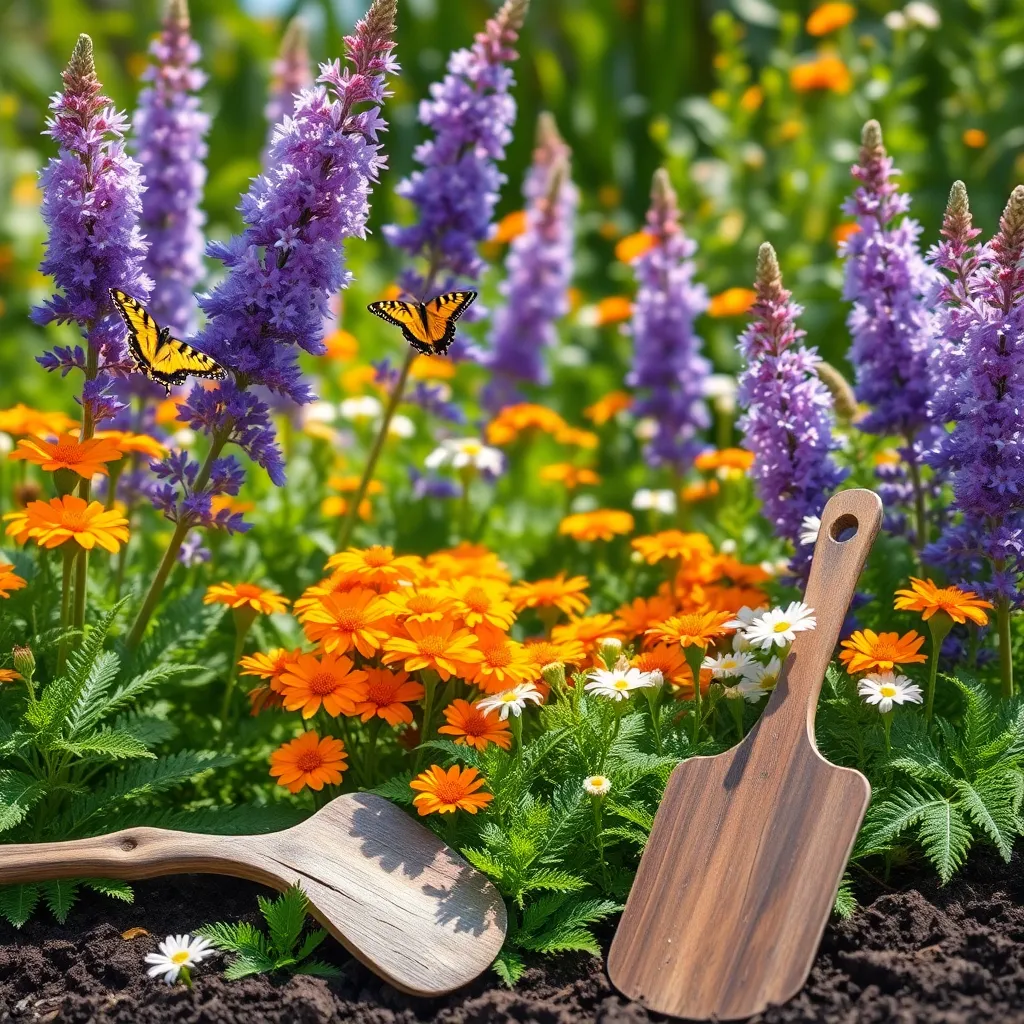
A thriving butterfly garden begins with selecting plants that provide both nectar for adults and host foliage for caterpillars. Native plants are often the best choice, as they are adapted to local conditions and support local butterfly species effectively.
Consider incorporating a variety of plants that bloom at different times to provide a continuous food source. Butterflies are attracted to bright colors like red, yellow, and purple, so choose flowers in these shades to draw them in.
Milkweed is a must-have for any butterfly garden, as it’s the primary host plant for monarch caterpillars. Plant it in a sunny spot with well-drained soil and keep the soil moist, especially during the growing season.
For a more advanced approach, try planting a mix of perennials and annuals to balance long-term growth with seasonal blooms. This combination not only enhances the beauty of your garden but also ensures continuous nectar availability, which is crucial for butterfly sustenance.
Lavender and coneflowers are excellent choices for attracting a variety of butterflies. They prefer full sun and well-drained soil, and once established, they require little maintenance—perfect for busy gardeners.
Finally, consider the microclimates in your garden and plant accordingly. By understanding the sun, shade, and moisture levels in different areas, you can place plants where they will thrive and ultimately attract more butterflies.
Must-Have Garden Tools
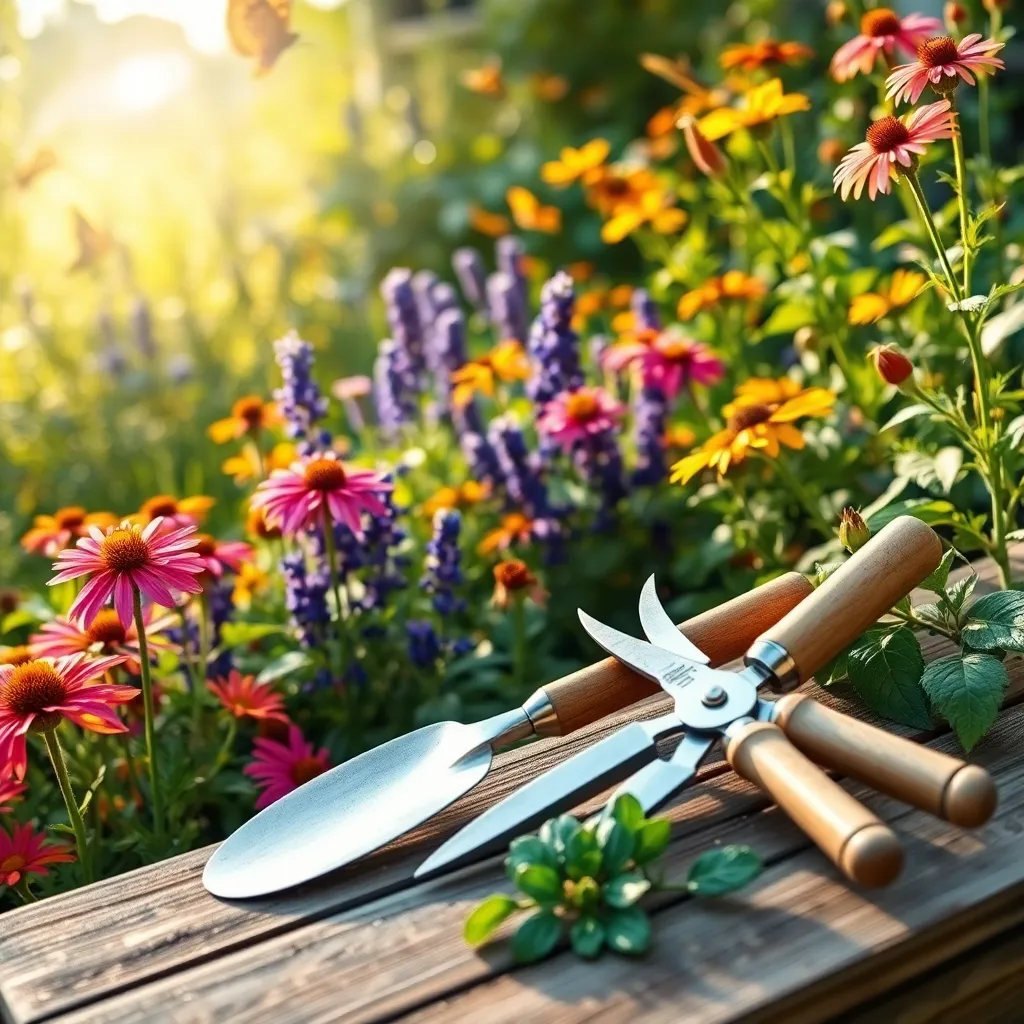
To create a thriving butterfly garden, having the right tools is essential for effective planting and maintenance. Start with a high-quality pair of pruning shears to easily trim plants and encourage healthy growth. Choose shears with a comfortable grip to reduce hand fatigue during extended use.
Another must-have tool is a sturdy garden trowel. This versatile tool is perfect for digging small holes for planting butterfly-friendly flowers and bulbs. Opt for a trowel with a rust-resistant finish to ensure longevity, especially in humid conditions.
For larger planting tasks, a durable spade is invaluable. A spade with a sharp edge will help you cut through tough soil and roots, making it easier to establish new garden beds. Consider a spade with a long handle to provide better leverage and reduce strain on your back.
Watering is crucial for a butterfly garden, so a reliable watering can or hose is essential. Ensure your watering tool has an adjustable nozzle to control the pressure and prevent soil erosion around delicate plants. Regular watering, especially during dry spells, will keep your garden lush and inviting to butterflies.
Setting Up Water Sources
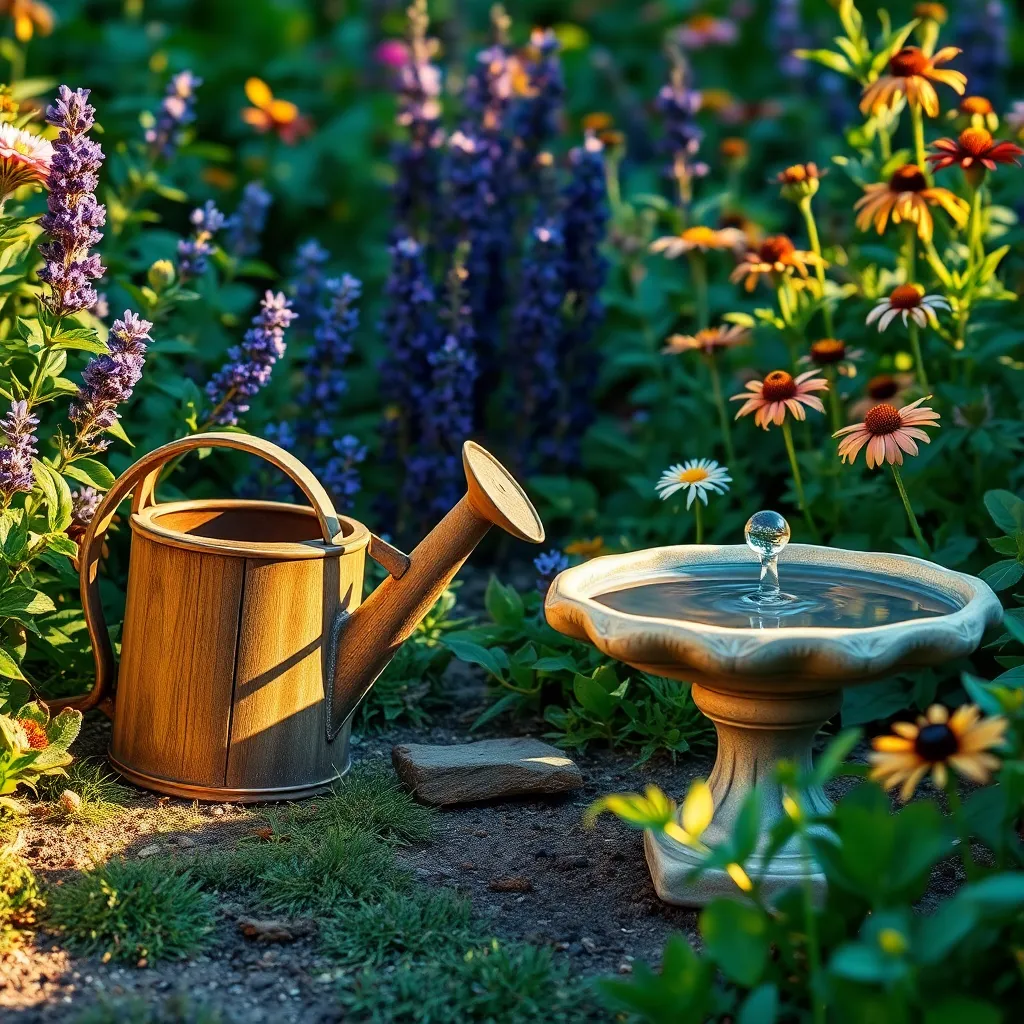
To attract butterflies to your garden, having a reliable water source is essential. A simple way to provide water is by setting up a shallow dish with stones, allowing butterflies to land and drink easily.
Ensure the water is fresh and clean by replacing it regularly, especially during hot weather when evaporation is rapid. Consider adding a few drops of vinegar to deter mosquitoes from breeding in the water.
For a more advanced setup, create a butterfly puddling station by mixing sand with a bit of rock salt in a shallow dish, then adding water until the mixture is damp. This mimics natural mineral sources and provides essential nutrients that butterflies seek.
Position your water sources in sunny spots as butterflies are drawn to warmth and sunlight. Additionally, place them near nectar-rich plants to create a complete habitat that caters to all their needs.
Creating Shelter and Shade
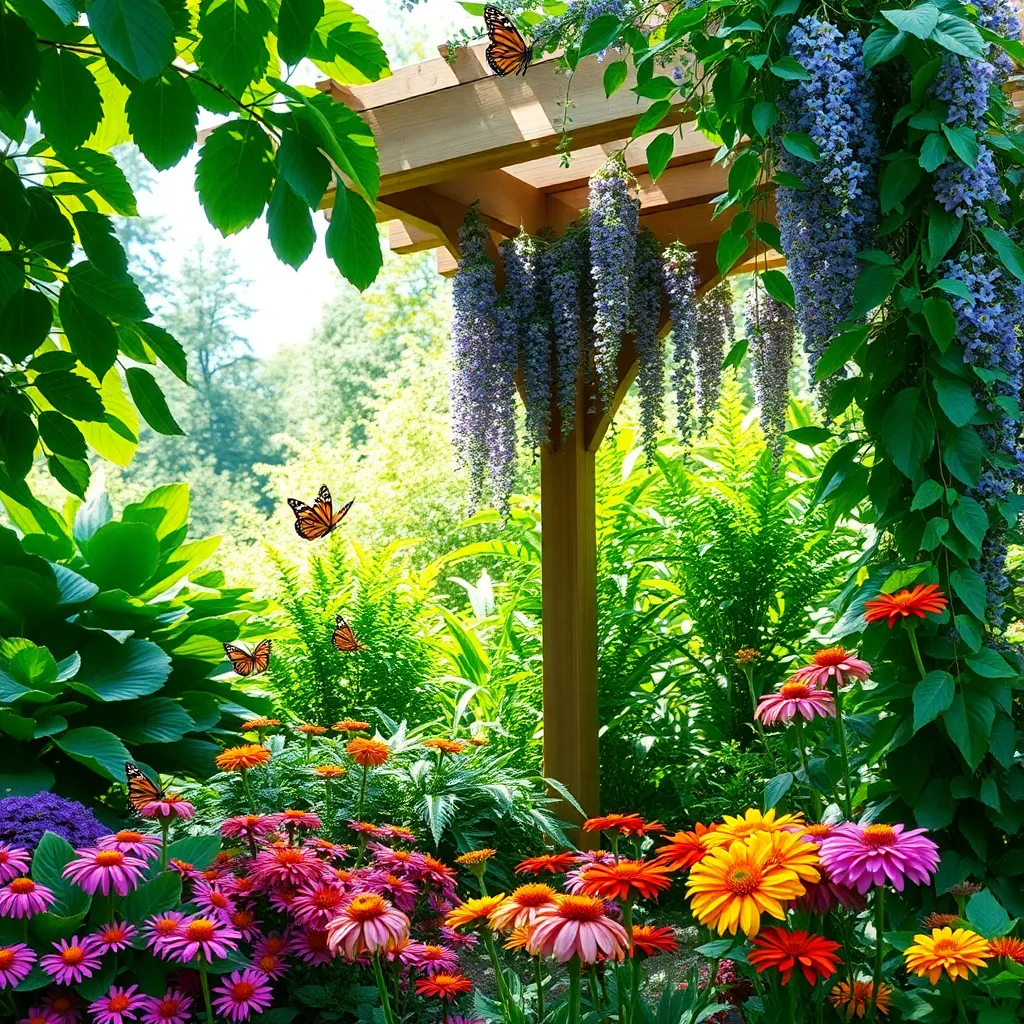
Creating shelter and shade is crucial for attracting butterflies to your garden. Butterflies need places to rest and protect themselves from harsh weather conditions, so incorporating these elements is essential for a thriving habitat.
Consider planting a variety of shrubs and small trees to provide natural cover. Species like willow, dogwood, and viburnum are excellent choices, as they not only offer shade but also attract butterfly host plants.
Integrating a mix of dense and open plants will create a balanced environment. This combination allows butterflies to enjoy both sunny basking spots and shaded retreats, ensuring they have the perfect microhabitat.
For those looking to add a creative touch, consider installing a simple pergola or trellis. Plant climbing vines such as clematis or honeysuckle to provide additional shade and visual interest while offering nectar-rich flowers for your winged visitors.
Maintaining Your Butterfly Habitat
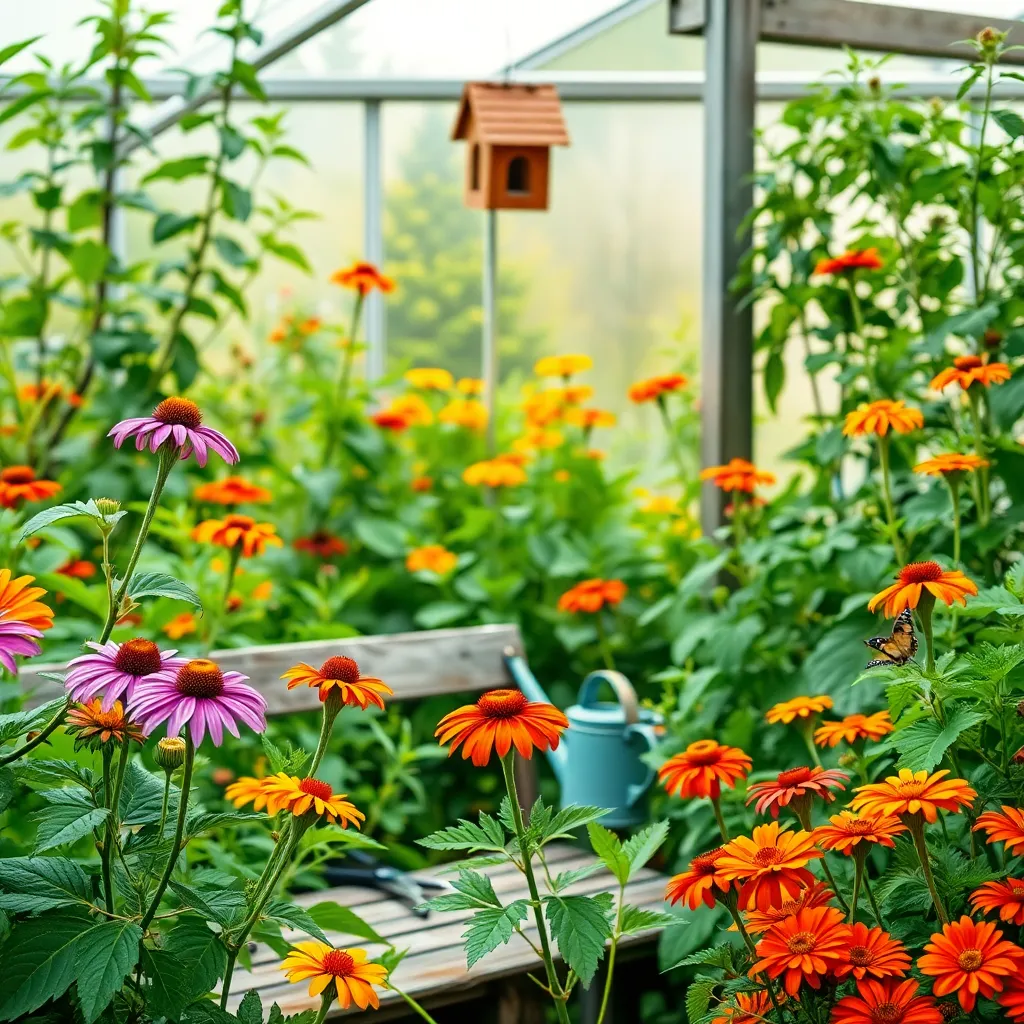
To maintain a thriving butterfly habitat, regular monitoring and care are essential. Begin by checking the health of your plants weekly, looking for signs of disease or pest infestations.
Watering is crucial for maintaining vibrant nectar plants. Ensure that the soil remains consistently moist but not waterlogged, particularly during dry spells.
Incorporating a mix of annuals and perennials can provide a continuous bloom cycle, which is vital for attracting butterflies throughout the season. Deadheading spent flowers can encourage more blooms and extend the flowering period.
For beginners, using a simple organic mulch like shredded bark or straw can help retain soil moisture and suppress weeds. More experienced gardeners may consider experimenting with companion planting to naturally deter pests without the use of chemicals.
Regularly trim back overgrown vegetation to maintain pathways and sunlight penetration. This not only keeps your garden tidy but also ensures that your butterfly habitat receives the necessary light exposure for healthy growth.
Conclusion: Growing Success with These Plants
As we’ve explored, creating a butterfly garden is a beautiful metaphor for nurturing relationships. The five key concepts we delved into were understanding the importance of a nourishing environment, being patient through growth phases, recognizing the significance of diverse and vibrant interactions, fostering open spaces for communication, and the joy of witnessing transformation together. Each of these elements is vital in cultivating a thriving relationship that, much like a garden, requires consistent care and attention.
An actionable step you can take today is to identify one area in your relationship that could use a bit more attention and plan a small, meaningful action to nurture it. Whether it’s setting aside time for a heartfelt conversation or planning a surprise that brings joy, start small and watch your relationship flourish.
Remember to bookmark this article as your go-to guide for relationship gardening. By keeping these principles at your fingertips, you’ll be better equipped to navigate the seasons of change and growth in your personal connections. As you continue to cultivate these essential tools, envision a future where your relationships are as vibrant and resilient as a thriving butterfly garden. Your efforts today are the seeds of tomorrow’s success.

